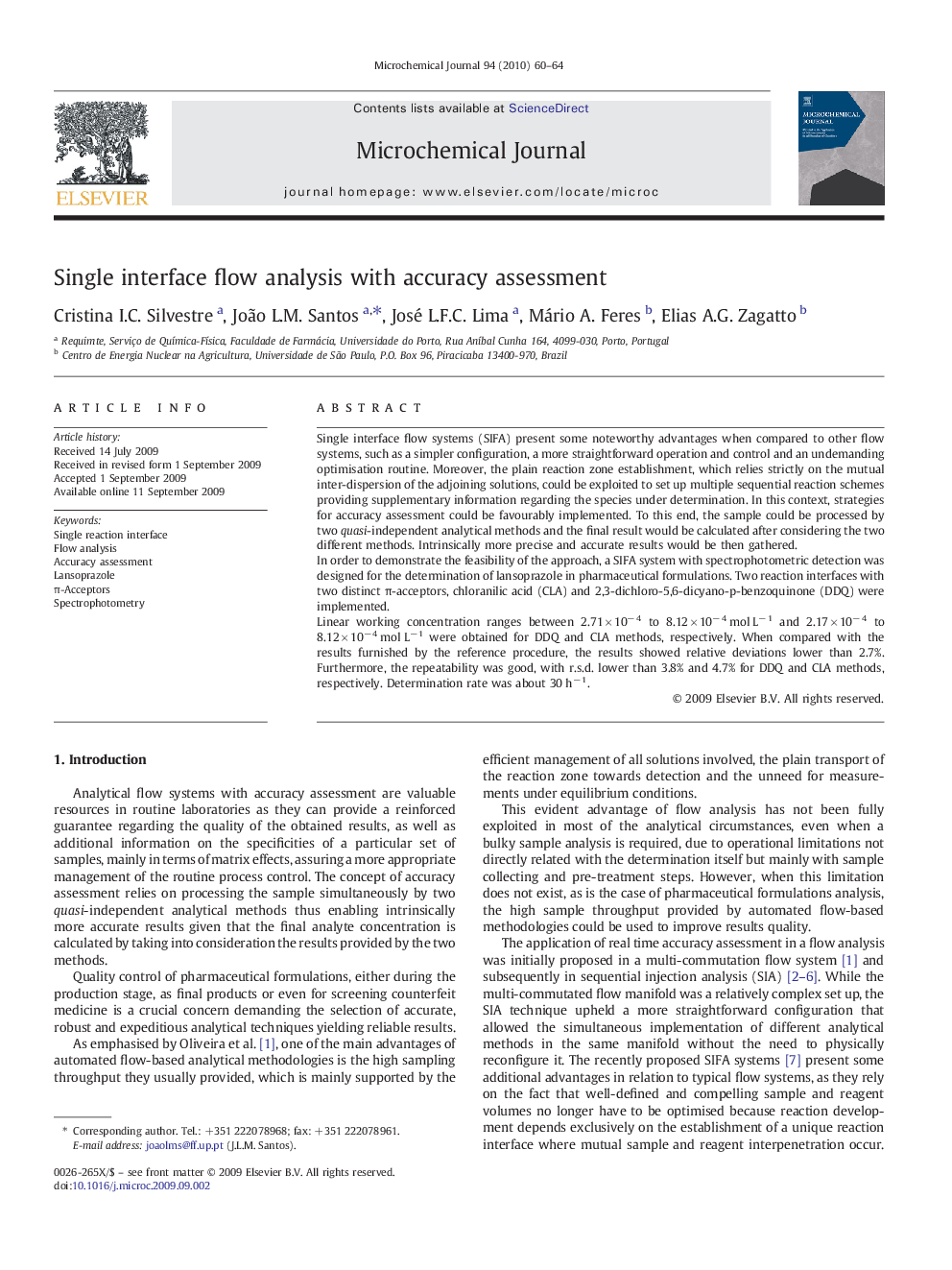| Article ID | Journal | Published Year | Pages | File Type |
|---|---|---|---|---|
| 1228412 | Microchemical Journal | 2010 | 5 Pages |
Single interface flow systems (SIFA) present some noteworthy advantages when compared to other flow systems, such as a simpler configuration, a more straightforward operation and control and an undemanding optimisation routine. Moreover, the plain reaction zone establishment, which relies strictly on the mutual inter-dispersion of the adjoining solutions, could be exploited to set up multiple sequential reaction schemes providing supplementary information regarding the species under determination. In this context, strategies for accuracy assessment could be favourably implemented. To this end, the sample could be processed by two quasi-independent analytical methods and the final result would be calculated after considering the two different methods. Intrinsically more precise and accurate results would be then gathered.In order to demonstrate the feasibility of the approach, a SIFA system with spectrophotometric detection was designed for the determination of lansoprazole in pharmaceutical formulations. Two reaction interfaces with two distinct π-acceptors, chloranilic acid (CLA) and 2,3-dichloro-5,6-dicyano-p-benzoquinone (DDQ) were implemented.Linear working concentration ranges between 2.71 × 10− 4 to 8.12 × 10− 4 mol L− 1 and 2.17 × 10− 4 to 8.12 × 10− 4 mol L− 1 were obtained for DDQ and CLA methods, respectively. When compared with the results furnished by the reference procedure, the results showed relative deviations lower than 2.7%. Furthermore, the repeatability was good, with r.s.d. lower than 3.8% and 4.7% for DDQ and CLA methods, respectively. Determination rate was about 30 h− 1.
